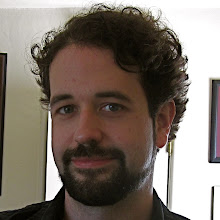While Costa's books have netted some criticism for their failure to draw on any scientific data to back up his recommended techniques, I believe that he is right on the mark in terms of his general argument. I've long said that the failure to teach people to think critically is the greatest weakness in our educational system, and much of our society is oriented toward intellectual laziness. We like our answers the way we like our food: quick, convenient, and prepackaged in easy serving sizes. Unfortunately, the sorts of "ideas" that come prepared in this way are no more healthy than the food of the same type, and they're ultimately toxic to one's intellectual development.
The one area where I have reservations with Costa's ideas is in the area of thinking collaboratively:
Collegial interaction is a crucial factor in the intellectual ecology of the school and classroom. Collaboratively, individuals can elicit thinking that surpasses individual effort, but such collaboration is difficult because it means temporarily suspending what I, individually, think. It means relaxing our grip on certainties and opening our minds to new perspectives, abiding by and supporting group decisions that are arrived at through deep, respectful listening and dialogue. Learners must come to understand that as they transcend the self and become part of the whole, they will not lose their individuality, only their egocentricity.
This is an exceedingly optimistic viewpoint on collaborative projects. It is true that when you have a group of active, creative participants with different strengths and weaknesses who are working together to solve a problem, they can come up with solutions that none of them could have developed individually. However, there are at least two other possible scenarios in which group projects can have disastrous consequences:
1.) One of the students is substantially more capable or motivated than the others. In this case, it is common for the student who is the most serious about learning to end up doing most or all of the work on the project, while the other team members passively ride on her achievements. In some cases the lead student may actually prefer this, if she perceives that her team members are incompetent and will do damage to her own grade if she allows them to have control over the project. This leads to feelings of injustice and resentment on the part of the lead student, because others are benefiting from her efforts (or, if the other students are required to contribute to the project, her grade is suffering because of her fellows' incompetence).
It is also possible that the lead student is wrong about her perceptions of the other students; she may have a team member who does have good ideas but is too timid to share them in the face of the lead student's forcefulness. In either case, the passive students likewise suffer, because the group project simply reinforces their own predisposition toward laziness; they will coast through the project on the minimum amount of effort and allow their more motivated fellows to raise their grade.
2.) Groupthink. This is potentially even more dangerous than Scenario #1. Psychologist Solomon Asch demonstrated that social conformity is a powerful negative force on human cognition; his experiments on social pressure and perception showed that many people will go along with an answer that is clearly incorrect in order to avoid conflict, social embarrassment, or being singled out as "peculiar." The power of groups to suppress argument, ignore data that deviates from their constructed worldview, and impose self-censorship on its members has been the cause of more bad policies than any other force in history.
Collaborative thinking does not, in and of itself, promote critical thinking; rather, it magnifies the thinking habits of the majority of its members, for good or ill. I think students have to learn how to be good thinkers as individuals, and to express their thoughts courageously, before they can be good contributors to collaborative thinking; otherwise, they will most likely be swept up in the silent, passive majority, going along with even things they are sure are incorrect, either because they are afraid of standing out or because they just don't care enough to raise the argument.

2 comments:
You raise some interesting points-- all of which point to (as you said) certain foundations that must be present in a classroom before good group work is possible. This is why we will spend much time working on creating a strong classroom community, because (as you point out), if people are worried about being ridiculed or do not know how to enter into useful conflict (i.e., bringing up that the work load is not fair), and the classroom does not support this kind of interaction, it won't happen. There is much a teacher can do to support this though-- you mention two situations that, while a teacher cannot eradicate alone, he/she can plan and develop supports for. When designing projects, we will spend time looking at different ways to structure the work/plan assessment of the project so the scenario you described does not happen. You also might want to think about how you can bring a spirit of inquiry to your classroom, so that the emphasis is on thinking and questioning, rather than being right/wrong. While this requires much thought and patience (sometimes this is going against peoples' entire experience of school, so it doesn't happen overnight), it is possible.
Seems like you also need to know each student. Very difficult where there's a high student-teacher ratio.
Great analysis. As an ADHDer, Costa's advice echoes tactics I'm personally using to get more done.
Post a Comment